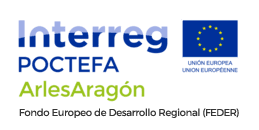Walking
The best time of the year to do the camino de santiago is from april to june and the months of september and october
In summer you have to take into account the heat and the high occupancy of the shelters. The months from October to March are ideal for very prepared pilgrims who are not afraid of the cold and who know that some shelters are closed. It is important to choose the schedules depending on the time of year, in summer it can be very hard in the middle of the day and in winter it can be the best time … It is recommended to request the credential at the point of departure. It is important because without it you cannot sleep in the establishments for pilgrims.


Advice
Walking the route is within the reach of everyone, as long as you know how to dose the effort according to your physical possibilities. It is recommended to train by taking longer and longer walks and, if possible, with the backpack loaded with all the essential equipment that you are going to carry, in order to assess what is really essential when it comes to carrying it. Since June 2017 there is a backpack transport service on the Camino de Santiago through Aragon and if you want to do the stages in a more comfortable way, CORREOS picks up your backpack in the morning and leaves it before 14:00 h. where you indicate.
Prepare the equipment
Backpack
It should be comfortable and lightweight. It is recommended to choose an anatomical type, with straps at the waist and chest, and with side and top pockets. Put things in the backpack in an orderly fashion and in plastic bags of different colours for ease of use and to prevent them from getting wet. Weight is a huge problem, you must be very selective with the “essentials” and avoid weighing more than 10 kg. It is also advisable to distribute the heaviest items at the bottom and as close as possible to the back. It is not advisable to carry anything hanging out of the backpack because it can easily get wet or lost.
Sleeping bag
This is essential if you plan to use refuges or pilgrims’ hostels. The thickness of the sleeping bag should be chosen according to the time of year in which the pilgrimage takes place. It is also necessary to bring a mat or foam.
Footwear
It is advisable to wear more than one pair of boots and to make sure that the foot is previously used to them. It is advisable to wear boots made of light fabric (which do not cause the foot to sweat), which protect the ankles from sprains and make it easier to walk over stones and mud. In summer you can wear trainers if you find boots uncomfortable.parmi les pierres et la boue. En été, vous pouvez porter des baskets si vous trouvez les bottes inconfortables
Clothing
Only the essentials, two sets of each piece, a jumper and a mackintosh or mackintosh that in case of rain can also cover the backpack. Do not forget to bring soap or sachets of detergent. Pilgrims identify themselves by carrying the shell or scallop and the walking staff in their backpacks. Do not forget a cloth or straw hat (recommended in hot weather). It is always advisable to carry a pair of long trousers and a jacket to avoid getting cold at the stops and to be able to dress discreetly to enter churches, shops, refuges, etc.
Food
You should always carry some food with you, especially nuts, fruit or chocolate, and a full water bottle. But it is useless to carry food for more than one day, and the refuges will inform you if it is difficult to buy food on the next stage. There are springs along the route but they can be dirty from cattle and some are difficult to find. In this link we provide information on safe water sources: see list. It is advisable to carry plenty of water, especially on the crossing of the Canal de Berdún and in the San Juan de la Peña mountain range where the villages are far apart and it is very hot in summer.
First aid kit
It is advisable to take iodine, cloth plasters, sterile gauze, plasters, a laxative and antidiarrhoeal medicine, anti-inflammatory cream and sun cream. It is essential to carry your Social Security card .
Walking stick
Helps with walking and optimises effort, even though it may sometimes seem annoying.
+ useful items
Torch. A plastic bag (with drawstrings to hang around your neck) to keep your maps handy without them breaking or getting wet. A notebook and pen to take notes. It is not advisable to carry a lot of money and it is better to use cards. Lighter, small knife, toilet paper, tissues, an alarm clock, mobile phone and charger. Remember your documents: identity card, social security card, credit card and pilgrim’s credentials. It can be very useful to carry it in a fanny pack so that it is always at hand.
It is advisable to inform family or friends of the idea of the route and the telephone numbers of the information offices for emergency situations. In the event of an accident, contact the nearest Civil Guard post.
Reference sources: Asociación de Amigos del Camino de Santiago de Jaca, Guía del Peregrino del Camino de Santiago por Aragón.



